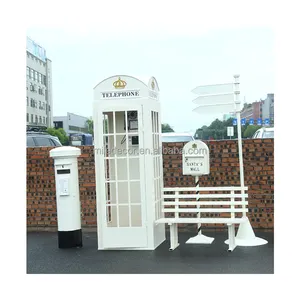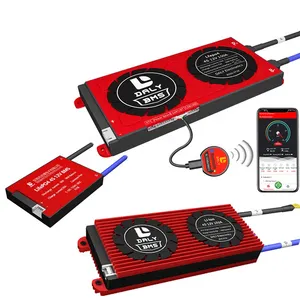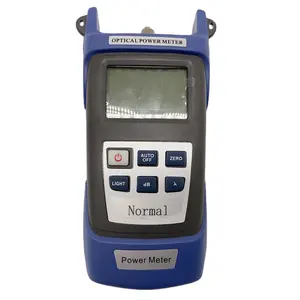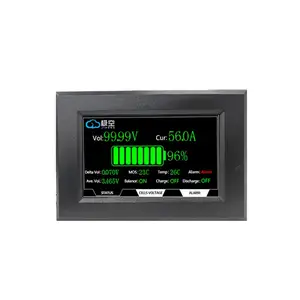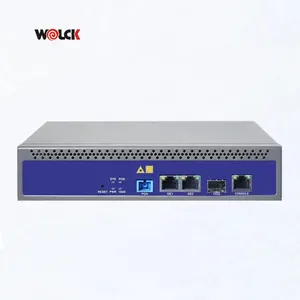Popular in your industry





























































Related Searches:























































































































Top categories
About programmable devices
What are Programmable Devices
Programmable devices are a class of electronic components that can be configured by the user to perform specific functions or tasks. These devices are at the heart of many of the technological systems and products that we use every day, from mobile phones to automotive control systems. They are designed for engineers, developers, and technicians who need to create custom solutions for various applications.
The principle behind programmable devices is that they contain hardware circuits whose behavior can be defined or altered by a user-written program. This program is usually developed on a computer and then downloaded onto the device. Once programmed, the device can execute the tasks as per the instructions without further intervention from a computer.
The flexibility of programmable devices makes them ideal for a wide range of uses. For example, in product development, they allow for rapid prototyping and testing without the need for costly and time-consuming custom hardware fabrication. They are also used in situations where the requirements may change over time, as they can be reprogrammed with new functionality, adapting to new needs or standards.
Programmable devices come in various forms, such as microcontrollers, programmable logic devices (PLDs), including complex programmable logic devices (CPLDs) and field-programmable gate arrays (FPGAs), and programmable system-on-chips (SoCs). Each type offers different levels of complexity, power consumption, and capabilities, catering to the specific needs of different projects and industries.
Types of Programmable Devices
Within the arena of electronic components and systems, programmable devices are essential tools for innovation and customization. Here's an overview of the common types available:
Microcontrollers: These are integrated circuits that combine a processor with memory and peripheral interfaces on a single chip. They're commonly used in embedded systems for automobile electronics, home appliances, medical devices, and other consumer electronics.
Programmable Logic Devices (PLDs): PLDs are digital circuits that can be programmed to implement various logical functions. Their primary applications include digital signal processing, video processing, and cryptographic systems.
Complex Programmable Logic Devices (CPLDs): A step up from PLDs in complexity, CPLDs feature a higher number of logical units and are suitable for more complex circuit designs. They're often utilized in device interfaces and control systems.
Field-Programmable Gate Arrays (FPGAs): These devices offer even greater flexibility with their reconfigurable logic blocks. FPGAs are ideal for prototyping integrated circuit designs or handling complex computations as seen in data centers and telecommunications equipment.
Programmable System-on-Chips (SoCs): SoCs integrate all components of a computer or other electronic system into a single chip. They're widely used in smartphones and tablets due to their compact size and efficiency.
How to Choose Programmable Devices
Selecting the right programmable device requires careful consideration of several factors to ensure it meets the specific requirements of your business's projects or products. Here's what businesses should examine when choosing among these versatile components:
System Requirements: Assess the complexity of the task at hand; simpler tasks might only need a microcontroller, while more intricate designs could necessitate an FPGA or SoC.
Performance Needs: Consider processing power and speed. High-performance applications may benefit from SoCs or high-end FPGAs.
Power Consumption: Evaluate how critical power efficiency is for your project as this can significantly impact your choice — microcontrollers are typically more power-efficient than FPGAs.
Development Time: Determine your timeline. Some programmable devices offer quicker development cycles due to their ease of programming and available tools.
Cost: Analyze your budget constraints; microcontrollers generally offer a cost-effective solution for mass-produced items while FPGAs might be preferred for low-volume or high-complexity products.
By taking into account these considerations along with specifics like memory requirements, I/O capabilities, and potential future scalability needs, businesses can make informed decisions that align with their objectives.
Best Programmable Devices on Alibaba.com
For businesses seeking versatile solutions in programmability, Alibaba.com stands as a premier marketplace offering an extensive array of programmable devices suitable for various applications. Whether you're looking to integrate them into manufacturing processes or utilize them within consumer products, Alibaba.com connects you with suppliers who can meet your specific needs.
Alibaba.com's platform is built with ease-of-use in mind, allowing buyers to navigate through options effectively, communicate with suppliers in multiple languages, and execute transactions securely thanks to services like Trade Assurance. The diversity of products available ensures that whether you're involved in machinery repair shops, retail operations or crafting solutions for home use, there is a programmable device that fits your requirements.
Entrepreneurs and enterprises alike find Alibaba.com an invaluable resource due to its global reach and comprehensive selection from trusted suppliers. This vast network empowers businesses not only to source existing products but also to collaborate on customized solutions when off-the-shelf options don't suffice. As a result, Alibaba.com continues to be instrumental in fostering innovation by providing access to cutting-edge programmable devices that drive technological advancement across industries.
Common FAQs for Programmable Devices
What is a programmable device?
A programmable device is an electronic component that can be programmed to perform specific tasks or functions. These devices are integral to various applications and can be reconfigured to meet changing needs.
What are the types of programmable devices available?
Programmable devices come in several types, including microcontrollers, programmable logic devices (PLDs), complex programmable logic devices (CPLDs), field-programmable gate arrays (FPGAs), and programmable system-on-chips (SoCs).
How do I program a programmable device?
Programming a programmable device typically involves writing code in a specialized software environment and then downloading it onto the device. The process varies depending on the device's complexity and type.
Can programmable devices be reprogrammed?
Yes, most programmable devices can be reprogrammed multiple times to update their functionality or repurpose them for different applications.
What factors should I consider when choosing a programmable device?
When choosing a programmable device, consider the system requirements, performance needs, power consumption, development time, and overall cost, as well as memory requirements and I/O capabilities.
Are there any industry-specific programmable devices?
While most programmable devices are versatile, some are tailored for specific industries like automotive electronics, consumer electronics, telecommunications, and data processing.
How do I choose between a microcontroller and an FPGA?
The choice between a microcontroller and an FPGA depends on the complexity of the task, performance requirements, power consumption considerations, development resources, and budget constraints.
What is the difference between a CPLD and an FPGA?
CPLDs are generally less complex than FPGAs and are used for simpler logic functions, while FPGAs offer more flexibility and capacity for handling intricate computations and high-performance applications.
Are there waterproof programmable devices available?
Yes, waterproof options are available for certain programmable devices. They are designed for applications where moisture or water exposure is a concern.
Can programmable devices be used in mobile phone applications?
Programmable devices can be used in mobile phone applications, often as part of the internal electronics for control functions or as external accessories for added capabilities.
What kind of support is available for troubleshooting programmable devices?
Support for troubleshooting programmable devices typically comes from the manufacturer or supplier, with documentation, forums, and technical assistance commonly provided.
Do programmable devices come with machinery test reports?
Some suppliers provide machinery test reports with their programmable devices, which can be critical for ensuring quality and compliance in certain applications.
What is meant by "real-time tracking" in the context of programmable devices?
Real-time tracking refers to the capability of certain programmable devices to monitor and report data instantaneously, often used in applications like fleet management or personal navigation.
